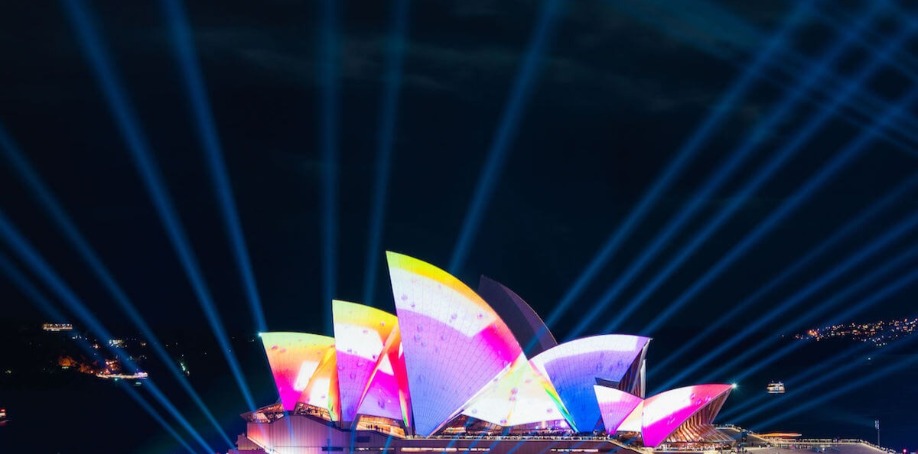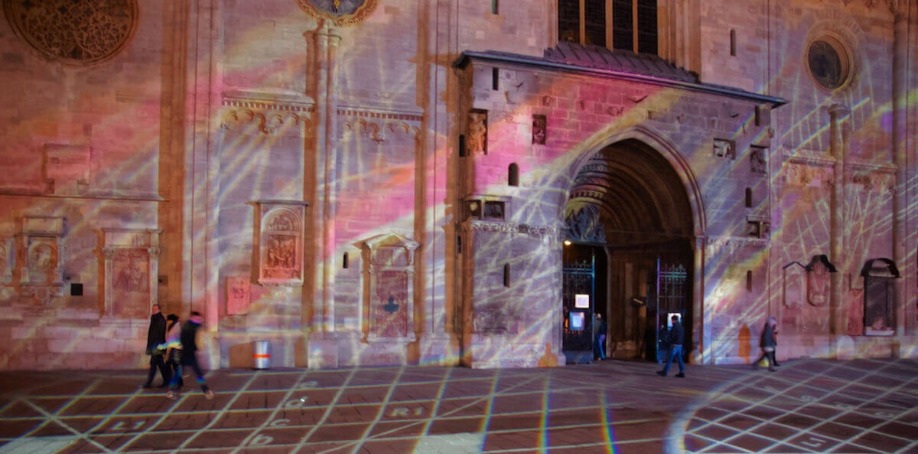
What do you think of when you hear the term projection mapping? If you’re familiar with the technology, you probably think of big events with showy visuals, flashy lights and a ridiculously high production value.
It’s normal to be skeptical about a technology that costs so much and packs such a big punch, but projection mapping has a number of practical uses that go beyond one-time events.
It can help your business stand out from the crowd and get ahead of the curve. But what solutions are available, and how can they be integrated into different businesses? What can your industry do with projection mapping?
The truth is every business will be able to use projection mapping a little differently. Here’s an overview of how the technology works, plus which practical and creative applications are being created now and for the future.
A Creative and Educational Tool
Projection mapping is a technology that has the capacity to transform any object into a screen, according to Creative Bloq. While it traditionally projects onto buildings and walls, recent advancements have enabled projections on moving objects, including actors and stage sets.
“In practical terms, it makes objects look as though the projected image is coming from them, opening incredible amounts of creative potential,” says Chicago Projection Mapping.
Projection mapping offers a world of creative options for those who choose to use it. This is partly due to the fact that its most popular in event and entertainment spaces, where big and bold displays are common. It is also frequently used in art exhibits or to make presentations more exciting.
As the technology becomes more popular, people are beginning to expand the boundaries of what projection mapping can do and achieve.
More companies are using it to amp up their displays at special events, including conferences and anniversary celebrations, says Mike Garrido, senior product manager at Christie.
The research that has been done on the industry backs this up. According to the new industry research by MarketsandMarkets, the overall market is estimated at 1.37 billion dollars in 2018 and is expected to reach 3.56 billion dollars by 2023.
Clearly, the growth of projection mapping is not expected to slow down any time soon. Some believe that the best is still to come. In fact, companies like Panasonic believe that we are entering a golden age of projection technology, and that we will see more companies take advantage of this exciting event tool.
“The growing interest in projection mapping is now supported by the vastly enhanced capabilities found in today’s projectors,” the company says.
People use projection mapping because it grabs and maintains attention. It gives people a reason to go places that they otherwise wouldn’t, inviting them into new and exciting worlds.
“Importantly for many venues competing with TV audiences, it also gives spectators added motivation to get off the couch and make the trip to the actual venue,” Michael Garwood writes at AV Technology Europe.
This type of thinking extends beyond televised events, of course. It’s why businesses are using the tool to encourage employee attendance at special events. It excites and entices not only strangers, but people within an organization.
This isn’t where projection mapping starts and ends, as Osaka University makes clear. “The systems are widely utilized not only for entertainment events, but also in clinical practice and technological development.”
These practical applications have nothing to do with the newness and excitement of the tool. Instead, the interactivity and educational aspect of projection mapping is its main business draw. It entices viewers far beyond a single screen and into deeper, more unexplored territory.

Practical Applications of Projection Mapping
Events aside, more people are seriously considering projection mapping for permanent, creative displays.
While projection mapping has traditionally been tied to events, the new breed of laser projectors has made it much more attractive to consider projection mapping,” says David Title, chief engagement officer at the experiential marketing studio Bravo Media.
He adds that there is an increased demand for long-term projection displays across multiple industries, including retail, hospitality, tourism and real estate. Projection mapping is becoming a go-to choice in these industries, which are constantly seeking new ways to engage and delight visitors.
A Toledo exhibit from First Hospitality Group is one example of a permanent projection mapping installation. This exhibit, which celebrates Toledo's recent renaissance, pays homage to the city's heritage as the glass capital of the world. Projected onto a hotel, this display unites the city's tourism, hospitality and art worlds in a single feature.
Projection mapping is also being used for wayfinding. As seen in an example from Intermedia Touch, a projection shows the map of visitor's locations in 3D. This helps people become more familiarized (and comfortable) with their surroundings, all while highlighting local businesses. “For example, you can display a specific office or building in 3D and also show the route from point A to Point B in 3D.”
The food industry is also taking note of the benefits of projection mapping. WeMapping, an audiovisual experience that combines immersive technology with fine dining, is using the technology to create a spectacle called table mapping.
“With table mapping, any kind of 3D images can be projected onto a table, changing colours and bringing the food, the dishes and the table itself to life.”
Up to 200 guests can enjoy these sensory themes, which offer a dining experience unlike any other.

The Future of Practical and Permanent Projection Mapping Displays
Practical applications of projection mapping have just begun to hit a mass scale. So, what can we expect from this technology moving forward?
BizBash writer Claire Hoffman reports on one projection mapping event at the Hollywood Bowl that combined live music, sports and visual experiences. “Colorful, high-energy projections on the Bowl's famous proscenium that moved perfectly in time with the music, fully immersing the audience in the performances.”
This kind of technology is great for practical applications that need real time adjustments, like wayfinding in places where locations change frequently. The audio element also makes it a good fit for museums or historical sites.
Still, this is just scratching the surface of what projection mapping can do. AV company Anna Valley notes that one practical application could be to use this technology to provide clients with 3D models of their projects.
This is particularly exciting because a projected model has many benefits over a physical or digital model. Imagine a model that clients can critique and see updated in real time, yet one that still takes up space physically, providing spatial understanding. This simply wasn't possible before projection mapping.
There are other exciting applications that come to mind when you think of how projection mapping has been used in events.
“3D projection mapping has applications that transcend décor, staging, backdrops and entertainment. For example, images can be projected on faces and costumes,” notes team building facilitator Anne Thornley-Brown.
These are just some of the ways that projection mapping can change various industries. How do you think it can change yours?
Images by: darylariawan/©123RF.com, Roman Babakin/©123RF.com, Maitree Boonkitphuwadon/©123RF.com


